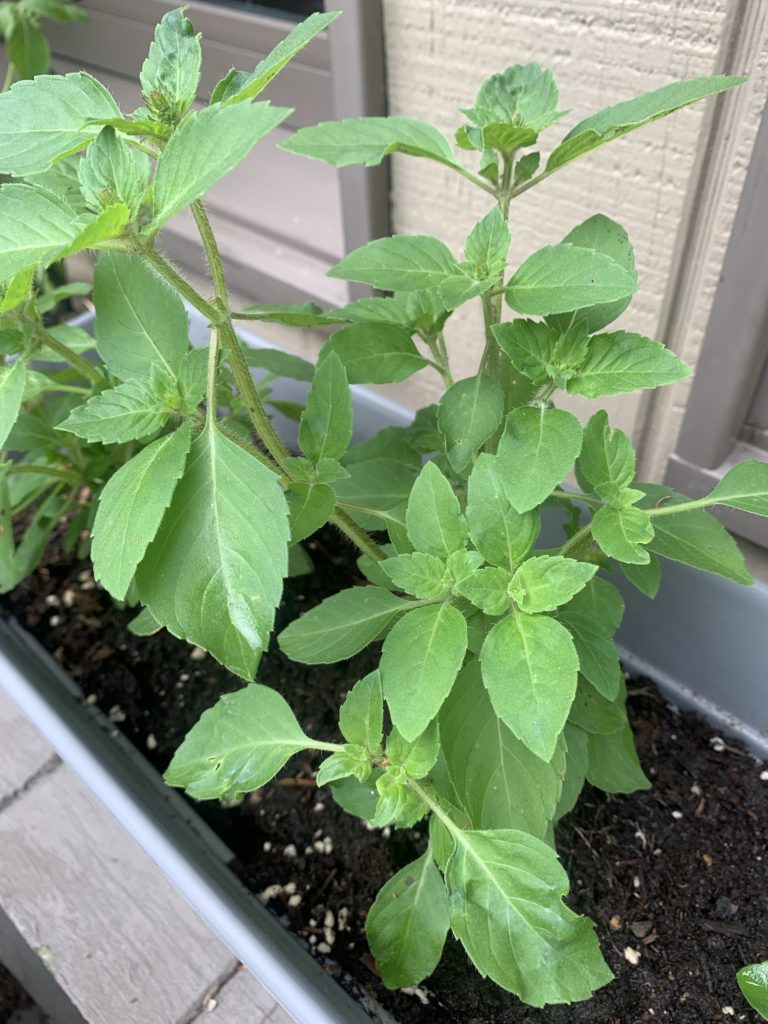Tulsi, also known as Holy Basil, is used extensively in Ayurvedic medicine. Tulsi is part of the Lamiaceae or mint family. While it is considered pungent and bitter, I find the taste of tulsi to be slightly sweet.
There are three types of holy basil:
- Rama Tulsi (Ocimum Sanctum) which has green leaves
- Krishna Tulsi (Ocimum Sanctum) which has purple leaves
- Vana Tulsi (Ocimum Gratissum) which has green leaves and grows wild in India

If you are looking to purchase plants, Rama and Krishna are more readily available here in the mid-western United States. In this planting zone they act like annuals.
There are many benefits to using tulsi regularly. It is considered an adaptogenic herb and an immunomodulator. This means that regular use can help the body better tolerate the effects of stress on the system and it can reduce excessive immune responses to common allergens.
Reducing the effects of stress can lead to improved digestion, a healthier heart and better sleep. Drinking a daily cup of tulsi tea is a beneficial habit to develop.
Tulsi is a cooling and drying herb, which acts as an adaptogen, antibacterial, antiviral, carminative, hyptensive, and immune amphoteric. I enjoy tulsi by itself, infused in honey or blended with catnip and hops.